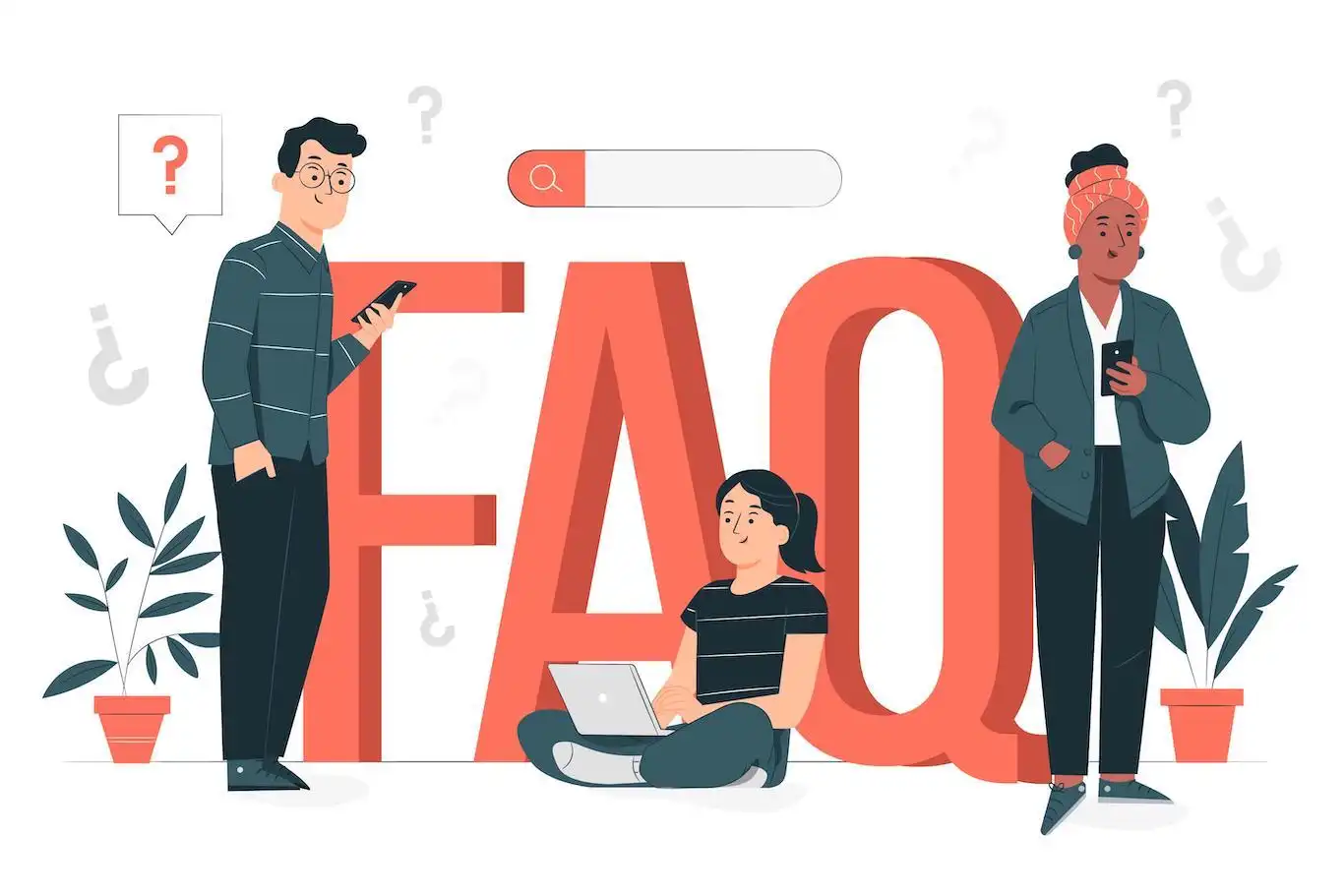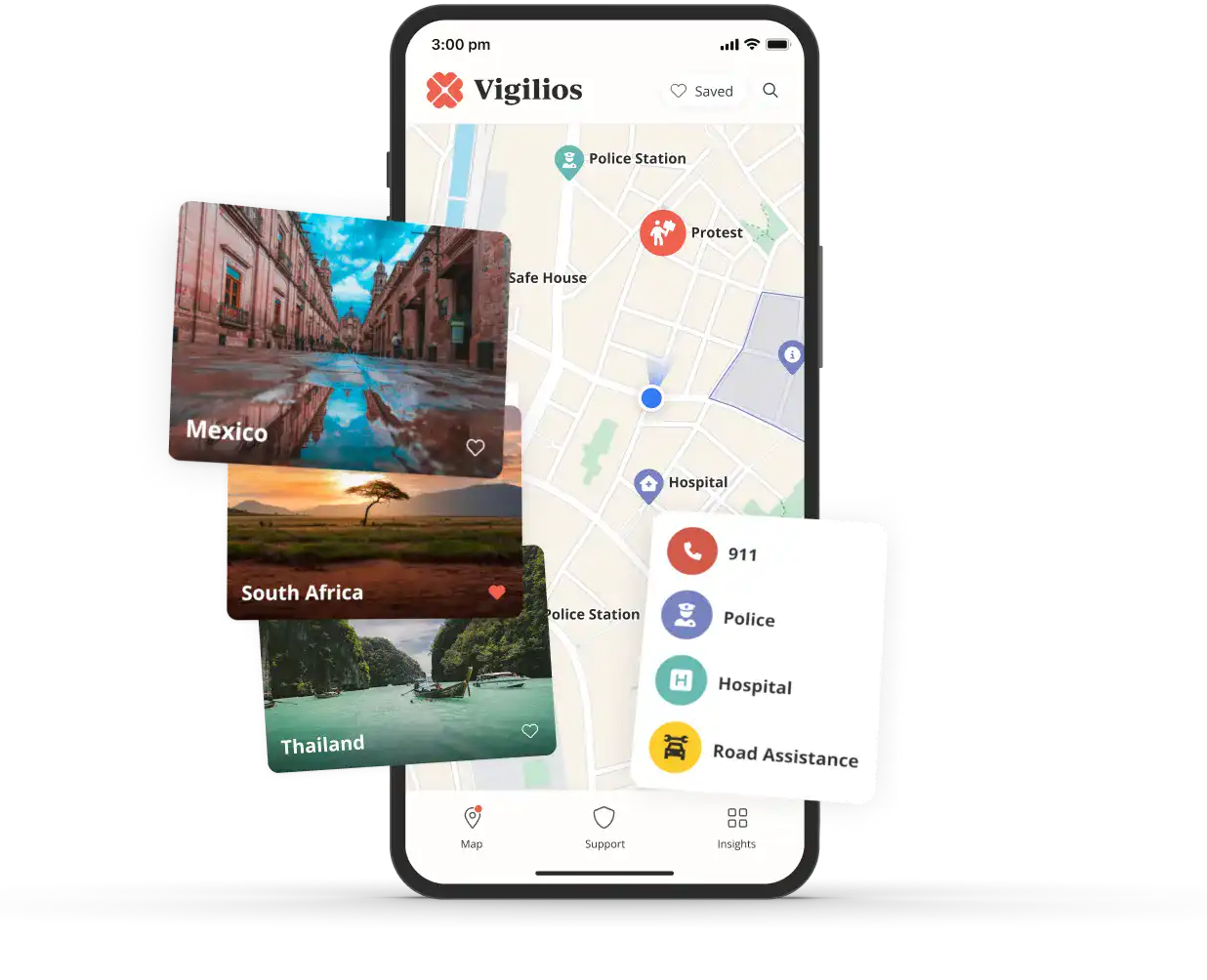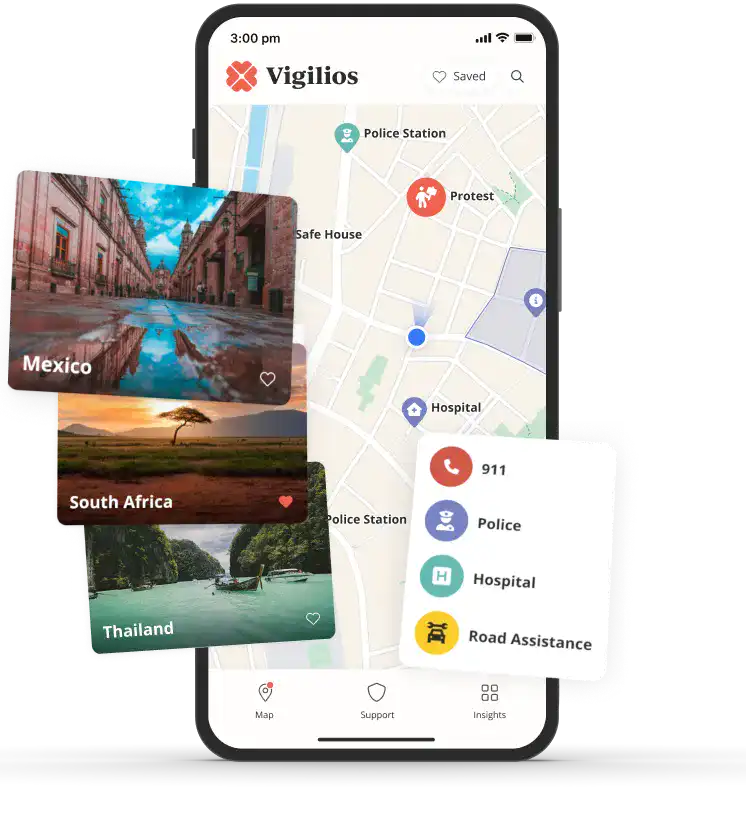


Is Cali in Colombia Safe?
Cali is generally safe for tourists, but caution is advised due to high crime rates. Petty theft and robberies are common, especially in crowded areas. Violent crime involving tourists is rare but does occur. Avoid isolated areas, particularly at night. Civil unrest stemming from political tensions can disrupt travel plans. Remain vigilant and follow local advisories.
Safety & Security
Cali, Colombia's third-largest city, has a reputation for being one of the country's most dangerous destinations. While the situation has improved in recent years, travelers should exercise caution and take necessary precautions.
-
Petty Crime: Pickpocketing, bag snatching, and theft from vehicles are common, especially in crowded areas and on public transportation. Remain vigilant and keep valuables secure.
-
Violent Crime: Although rates have decreased, armed robberies, muggings, and carjackings still occur, particularly at night and in isolated areas. Avoid walking alone after dark and use trusted transportation services.
-
Scams: Be wary of common scams, such as fake police officers, taxi overcharging, and friendly strangers offering unsolicited help or tours.
-
Civil Unrest: Protests and demonstrations can turn violent without warning. Monitor local media and avoid areas where large crowds gather.
-
Disputes: Avoid confrontations and disputes, as they can escalate quickly. Exercise patience and remain calm in challenging situations.
While Cali has its risks, following basic safety precautions and staying alert can help mitigate potential dangers. Consult local authorities or your embassy for the latest security updates and travel advisories.
Health & Medical
Cali in Colombia is generally considered safe for travelers in terms of health risks, but there are a few important considerations to keep in mind.
-
Vaccinations: Ensure routine vaccinations are up-to-date, and consider hepatitis A, typhoid, and yellow fever vaccines depending on your travel plans.
-
Mosquito-borne Illnesses: Zika, dengue, chikungunya, and malaria are present in some areas of Colombia. Use insect repellent, wear long sleeves/pants, and consider antimalarial medication if visiting high-risk regions.
-
Food and Water Safety: Drink only bottled or purified water, avoid ice cubes, and be cautious with raw fruits/vegetables to prevent traveler's diarrhea and other foodborne illnesses.
-
Air Pollution: Cali experiences moderate air pollution levels, which may exacerbate respiratory conditions. Those with asthma or lung diseases should take precautions.
-
Medical Facilities: Private hospitals and clinics in Cali generally provide good care, but medical evacuation insurance is recommended for serious conditions or emergencies.
While no major disease outbreaks are currently reported in Cali, it's advisable to consult a travel health professional for personalized advice based on your specific itinerary and health status.
Natural Disasters
Cali, located in western Colombia, experiences a tropical climate with relatively stable temperatures throughout the year. However, the city's proximity to the Pacific Ocean and its location in a valley make it susceptible to certain natural hazards.
-
Flooding: Heavy rainfall during the rainy seasons (March-May and September-November) can lead to flooding in low-lying areas and along riverbanks. Travelers should exercise caution and avoid areas prone to flooding during these periods.
-
Landslides: The city's hilly terrain and occasional heavy rains increase the risk of landslides, particularly in informal settlements on steep slopes. Travelers should be aware of this risk and follow local advisories.
-
Earthquakes: Colombia is located in a seismically active region, and Cali is no exception. While major earthquakes are infrequent, minor tremors can occur. Travelers should familiarize themselves with safety procedures in case of an earthquake.
-
Volcanic Activity: Although there are no active volcanoes in the immediate vicinity of Cali, the city's location in the Andean region means that volcanic ash from eruptions elsewhere in Colombia could potentially affect the area.
While natural disasters are a consideration, their occurrence is relatively infrequent in Cali. Travelers can mitigate risks by staying informed about weather conditions, following local advisories, and taking necessary precautions.
Transportation
Transportation in Cali, Colombia, can be a mixed experience for travelers. While public transportation options like buses and taxis are widely available and relatively inexpensive, safety concerns exist.
-
Public Buses: Cali has an extensive bus network, but overcrowding and petty crime can be issues, especially on routes through less secure areas. Exercise caution with personal belongings.
-
Taxis: Official taxis are generally safe, but only use reputable companies or apps like Uber or Cabify. Avoid unmarked cabs to prevent potential scams or robberies.
-
Rental Cars: Renting a car provides more freedom but also risks, as carjackings and robberies at traffic lights have occurred. Avoid driving at night and park in secure areas.
-
Walking/Cycling: Exercise caution when walking or cycling, especially at night or in isolated areas. Stick to well-lit, populated routes and avoid wearing valuables openly.
-
Road Safety: Roads can be chaotic, with aggressive driving and poor signage. Pedestrians should be extremely vigilant when crossing streets.
While transportation concerns exist, taking proper precautions like using licensed services, avoiding high-risk areas at night, and remaining vigilant can help mitigate risks for travelers in Cali.
Cultural Norms
Cali, Colombia is a vibrant city with a rich cultural heritage. As a traveler, it's essential to respect local customs and traditions to ensure a smooth and enjoyable experience. Here are some key points to keep in mind:
-
Dress Code: While casual attire is generally acceptable, it's advisable to dress modestly, especially when visiting religious sites or traditional neighborhoods. Avoid revealing clothing that could be seen as disrespectful.
-
Greetings: Colombians value warmth and courtesy in greetings. A handshake, a smile, and a friendly "buenos días/tardes/noches" (good morning/afternoon/evening) can go a long way.
-
Public Displays of Affection: While not strictly taboo, excessive public displays of affection between couples may be frowned upon, especially in more conservative areas.
-
Photography: Be mindful when taking photographs, especially of individuals or religious sites. It's polite to ask for permission before capturing someone's image.
-
Religious Observances: Cali has a predominantly Catholic population. During religious festivals or events, be respectful of local customs and traditions.
-
Music and Dance: Salsa and other traditional dances are an integral part of Cali's culture. Embrace the opportunity to experience these vibrant art forms while respecting the local etiquette.
-
Language: While English is spoken in tourist areas, learning a few basic Spanish phrases can help you connect with locals and show respect for their culture.
Remember, cultural sensitivity is key to fostering understanding and building positive relationships with the local community during your travels in Cali.
Emergency Services
Cali, Colombia offers a range of emergency services for travelers, though their availability and quality can vary. The city has a centralized emergency number, but response times may be inconsistent. Private ambulance services are generally more reliable but can be costly. Major hospitals provide adequate care, but language barriers and long wait times are common challenges.
-
Public Emergency Services are available through a centralized emergency number, but response times can be slow, especially during peak hours or in remote areas.
-
Private Ambulance Services offer faster response times and better-equipped vehicles, but they can be expensive for travelers without adequate insurance coverage.
-
Major Hospitals and Clinics in Cali provide decent medical care, but language barriers and long wait times can be frustrating for foreign visitors. It's advisable to have travel insurance that covers medical emergencies.
-
Tourist Police Units operate in popular areas and can assist with emergencies involving tourists, though their presence is limited outside major tourist zones.
-
Embassy or Consular Assistance may be available for emergencies involving citizens of certain countries, but their resources and response capabilities can be limited.
Frequently Asked Questions

Is Cali safe for tourists?
Cali is generally safe for tourists, but caution is advised. Avoid isolated areas, especially at night, and be aware of your surroundings. Petty crime like pickpocketing and bag snatching can occur. Use authorized taxis or ride-sharing services, and don't flaunt valuables.
Is Cali safe for solo female travelers?
Solo female travelers should exercise caution in Cali. Avoid walking alone at night, and be aware of your surroundings. Dress conservatively and don't accept drinks from strangers. Use trusted transportation services and stay in well-lit, populated areas.
Is Cali safe for families?
Cali is generally safe for families, but caution is advised. Avoid isolated areas and be vigilant in crowded places. Use trusted transportation services and stay in family-friendly neighborhoods. Ensure children are supervised at all times.
Is Cali LGBTQ+ friendly?
While same-sex relationships are legal in Colombia, LGBTQ+ travelers should exercise caution in Cali. Public displays of affection may draw unwanted attention. Research LGBTQ+-friendly establishments and events before visiting.
Do you need a visa to go to Cali?
Citizens of most Western countries, including the United States, Canada, and the European Union, do not need a visa for tourist stays up to 90 days in Colombia. However, a valid passport is required for entry.
Can you drink tap water in Cali?
It's not recommended to drink tap water in Cali. Stick to bottled or purified water, even for brushing teeth. Avoid ice cubes made from tap water and be cautious with fresh produce washed in tap water.
What is the currency in Cali?
The Colombian peso (COP) is the official currency in Cali. While credit cards are accepted in many establishments, it's advisable to carry cash for smaller purchases and tipping.
Colombia Travel Advisory
The following government travel advisories provide additional helpful resources for your destination to stay safe and informed.
Related Content
- MEDIUM RISK
🇨🇴 Colombia
Colombia has made significant strides in improving safety, but risks persist. While major cities are generally safe, petty crime and robbery remain concerns, especially in tourist areas. Violent crime linked to drug trafficking occurs in certain regions. Civil unrest and protests can disrupt travel. Travelers should exercise caution, avoid isolated areas, safeguard valuables, and monitor local news for potential threats.
- MEDIUM RISK
🇨🇴 Barranquilla, Colombia
Barranquilla is generally safe for tourists, but caution is advised. Petty crime like pickpocketing is common, so remain vigilant in crowded areas. Violent crime rates are moderate, but tourists should avoid isolated areas, especially at night. The risk of terrorism is low, but be aware of your surroundings. Adequate medical facilities are available, but insect-borne diseases like dengue fever pose a risk.
- MEDIUM RISK
🇨🇴 Bogotá, Colombia
Bogotá has a moderate crime rate, with risks of petty theft, robberies, and disputes. Civil unrest occasionally disrupts transportation. While terrorism is rare, caution is advised in crowded areas. Adequate medical facilities are available, but insect-borne diseases like Zika and dengue pose health concerns. Respecting cultural norms, especially during religious events, is crucial for a smooth experience.
- MEDIUM RISK
🇨🇴 Cartagena, Colombia
Cartagena is generally safe for tourists, though petty crime like pickpocketing is common in crowded areas. Violent crime rates are moderate, but tourists should avoid isolated areas at night. Scams targeting foreigners occur, so remain vigilant. The risk of civil unrest is low, but tensions can escalate during protests. Tap water is unsafe to drink, so stick to bottled water.
- MEDIUM RISK
🇨🇴 Copacabana, Colombia
Copacabana in Colombia is generally safe for tourists, but caution is advised. Petty crime like pickpocketing is common, so remain vigilant in crowded areas. Violent crime rates are moderate, but tourists are rarely targeted. Avoid isolated areas at night. The risk of civil unrest is low, but stay updated on local news. Medical facilities are adequate, but travel insurance is recommended for emergencies.
- MEDIUM RISK
🇨🇴 Fresno, Colombia
Fresno in Colombia has a moderate crime rate, with risks of petty theft and robberies. Tourists should exercise caution in certain areas, especially at night. The city experiences heavy rainfall during the rainy season, increasing the risk of flash floods. Adequate medical facilities are available, but travelers should get vaccinations for diseases like yellow fever. Respecting local customs and being culturally aware is advisable for a smooth travel experience.
- MEDIUM RISK
🇨🇴 Guadalupe, Colombia
Guadalupe in Colombia poses moderate safety risks for travelers. While petty crime is common, violent crime remains relatively low. However, caution is advised due to the presence of drug trafficking groups and civil unrest in some areas. Travelers should avoid protests, remain vigilant, and follow local advisories. Adequate medical facilities are available in major cities, but insect-borne diseases like dengue and Zika are concerns.
- MEDIUM RISK
🇨🇴 Medellín, Colombia
Medellín has made significant strides in improving safety, but petty crime and robbery remain concerns. While violent crime has decreased, disputes over territory by criminal groups still occur. Travelers should exercise caution, avoid isolated areas, and safeguard valuables. The city's clean and efficient metro system offers a relatively safe transportation option. With reasonable precautions, most visits are trouble-free.
- MEDIUM RISK
🇨🇴 Puerto Escondido, Colombia
Puerto Escondido in Colombia is generally safe for tourists, but caution is advised. Petty crime like pickpocketing is common, so remain vigilant in crowded areas. Violent crime rates are moderate, but tourists are rarely targeted. Avoid isolated areas at night. The risk of natural disasters is low, but heavy rainfall can cause flash floods. Public transportation is generally reliable, but taxis should be pre-booked for safety.
- MEDIUM RISK
🇨🇴 Santa Marta, Colombia
Santa Marta in Colombia has a moderate risk of petty crime and robbery, especially in tourist areas. While violent crime rates are relatively low, travelers should remain vigilant and avoid isolated areas, particularly at night. The city experiences occasional civil unrest and protests, which can disrupt transportation. Travelers should exercise caution during large gatherings and monitor local news. Overall, Santa Marta is generally safe for tourists who take reasonable precautions.
- MEDIUM RISK
🇨🇴 Santa Rosa, Colombia
Santa Rosa is generally safe for tourists, though petty crime like pickpocketing is common. Violent crime rates are relatively low, but disputes can escalate quickly. Scams targeting tourists occur, so remain vigilant. The city has seen occasional civil unrest, but the situation is currently stable. Travelers should avoid protests and follow local advisories.















